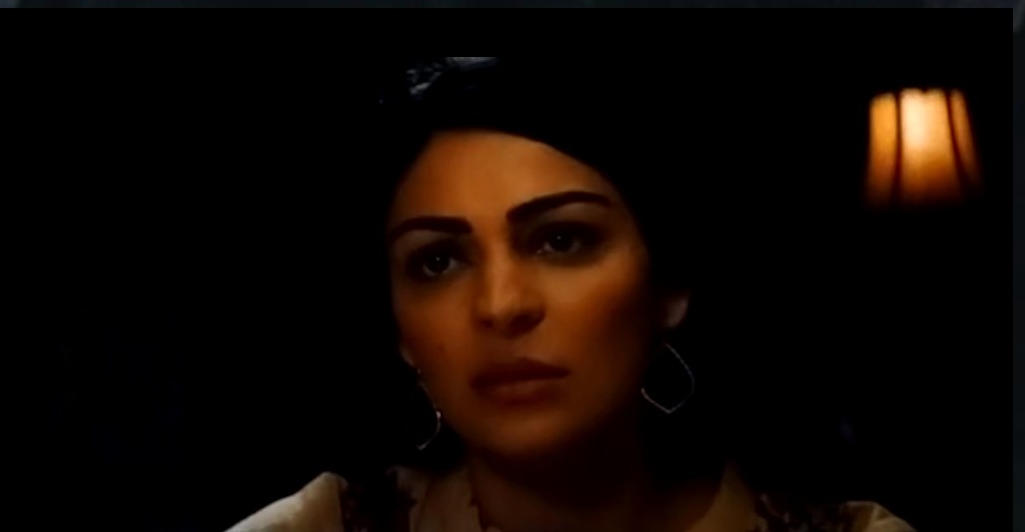The terrifying supernatural horror universe gained a new member in 2023 with “It Lives Inside.” This picture, which stars the gifted Megan Suri and was written and directed by Bishal Dutta, debuted at the esteemed 2023 South by Southwest Film Festival before catching the attention of horror fans. Since its September 22, 2023, Neon release, “It Lives Inside” has established a distinct niche for itself in the horror film industry.
This article will take you into the spooky realm of “It Lives Inside,” where you can read about its intriguing plot, analyze its mysterious resolution, and discover the deep significance of it all. Come along as we unravel the mysteries of this supernatural horror movie that skillfully incorporates concepts of identity and heritage into its terrifying story.
It Lives Inside (2023) Movie Story
The story of “It Lives Inside” has a heart that is both familiar and novel, a nuanced balance that gives the film’s horror aspects more nuance. The main character of the movie is Sam (Megan Suri), an Indian high school girl who longs to renounce her Indian ancestry in order to fit in. As the narrative progresses, we see Sam’s attempt to blend in with her mostly white high school classmates—a path that distances her from her Indian heritage.
Famous for her parts in “Never Have I Ever” and “Missing,” Megan Suri gives Sam, or Samidha as she likes to be called, a life of her own. Sam grows apart from Tamira, her childhood friend, as a result of her mother’s resolve to maintain their cultural history and Sam’s desire to fit in with her friends. The breakup of friendship, evoking stories from stories like “Heathers” and “Fright Night,” establishes the mood for the otherworldly terrors to transpire.
Sam’s initial irritation turns to concern as Tamira’s actions take an odd and scary turn. Tamira starts to believe that a dark force is at work, a curse that targets those of a particular ancestry. This curse is imposed by a Pishach, a malignant spirit; it is not an everyday affliction.
Deeply ingrained in Hindu mythology, the Pishach is a demonic creature with a malevolent taste for both terror and flesh. It clings to the worst wishes and anxieties of those who are unlucky enough to be in its crosshairs, haunting their nightmares. “It Lives Inside” does a great job of establishing a truly spooky atmosphere when it keeps the Pishach a mystery and uses sound design to arouse terror. Nevertheless, the terrifying creature begins to lose some of its dread as the movie reveals its mysteries.
In spite of its PG-13 classification, “It Lives Inside” creates a slick, ominous atmosphere. Dutta’s skillful directing and the film’s effective use of gloom make it an engaging trailer for bigger genre releases down the road. Even if there are occasional expositional parts in the script, it excels at focusing on particular facets of the characters’ lives.
The film’s horror-focused plot gains complexity through its exploration of unresolved issues related to cultural reinvention and immigrant guilt. Despite being simple at times, Dutta’s approach to metaphorical horror is successful and thought-provoking. We are excited to see what Dutta will uncover in his upcoming works because of these sequences in the movie where it finds its distinct voice.
It Lives Inside (2023) Movie Ending Explained!
“It Lives Inside” ends with a mix of mixed feelings and unanswered questions. Sam, who is now involved with the Pishach, has an uncertain future as the movie approaches its finale. There is a feeling of fear even though she has assured everyone that the beast will never escape.
The Pishach is a cunning and sinister force that does not stay satisfied for very long. After surviving on a person’s life power and feeding on human souls, it has finally settled inside Sam. The picture closes with a disquieting note, as S’s tears reveal her internal struggle. She is aware of how serious the situation is; she is now the Pishach’s vessel.
Sam keeps her concerns about the Pishach’s ravenous thirst for power and independence a secret from her loved ones, but they are a looming threat. The creature might not be happy living confined to Sam; it might try to subdue her from the inside out or even try to get her to do its wicked will. We are left with the uncomfortable impression by the movie that Sam’s possession by the Pishach might result in a terrible and permanent change.
Her control over her own thoughts and actions may wane the longer she is possessed. Sam hides the notion that the Pishach is gradually weakening her will and controlling her from the inside because she is adamant about defending the people she loves. Once a symbol of protection, the protective henna may not be able to contain the Pishach’s evil.
We are left wondering about how Sam’s will to defend the people she loves and the constant threat posed by Pishach’s power must be balanced as the movie comes to an end. It’s a climax that sticks in our heads, demonstrating how well the movie balances terror with the subtleties of the human psyche.
The Significance of “It Lives Inside”
The film “It Lives Inside” delves deeper into topics of identity, integration, and the immigrant experience, all while exploring terrifying supernatural elements. The problems of many people torn between wanting to blend in with a society that is mostly different from their own and their cultural heritage are reflected in Sam’s trip.
The conflict that exists between Sam and her mother Poorna (Neeru Bajwa) is a symbol of the differences in culture and generation. Sam wants to fit in with the mostly white high school culture, while Poorna is attached to their Indian customs and values. This struggle reflects the larger difficulties that immigrants and their offspring encounter when deciding between adhering to the culture of their new country and maintaining their heritage.
The evil creature known as the Pishach, which preys on Sam and Tamira (Mohana Krishnan), is a metaphor for the bad experiences and ideas that people may have when faced with similar circumstances. It stands for the weight of melancholy and loneliness that might result from feeling alienated and cut off from one’s roots and the society one aspires to belong to.
Sam’s journey represents her return to her roots; it begins with her rejection of her Indian heritage and ends with her confronting the Pishach. It’s a potent reflection on how crucial it is to accept and value one’s cultural uniqueness in spite of social pressure to fit in. The movie implies that severing these cultural ties might result in a real and, in the case of the Pishach, symbolic plunge into darkness.
Sam is owned by the Pishach in “It Lives Inside,” which serves as a warning about the possible repercussions of ignoring one’s heritage. It serves as a reminder that issues related to cultural identity are not only exterior but may also have a significant effect on an individual’s inner self. Sam’s struggle with the Pishach comes to represent her inner turmoil and her decision to face it head-on rather than brush it under the rug.
Conclusion
Beyond the bounds of traditional supernatural horror, “It Lives Inside” provides a provocative examination of identity, assimilation, and the immigrant experience. The film makes a lasting impact thanks to Megan Suri’s engaging acting and Bishal Dutta‘s deft direction. Through Sam’s voyage, we are reminded of the importance of cultural legacy and the implications of ignoring it as we traverse its perilous waters. “It Lives Inside” urges us to face our personal inner demons and accept the core of our identity in the face of darkness that threatens to engulf us. Ultimately, the struggle for one’s own soul is what truly terrifies people—not the paranormal.








